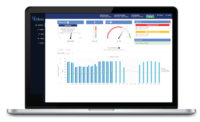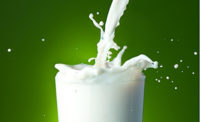Study: Dairy Industry Makes Strides toward Carbon Footprint Reduction

Agricultural greenhouse gases (GHG) make up 8.1% of total U.S. GHG emissions. Therefore, the dairy cattle farming industry is challenged to reduce greenhouse gas emissions while maintaining or increasing profitability, according to a study published in the Journal of Dairy Science. In this study, researchers report that farms with lower carbon footprints and higher-producing cows are more profitable.
Investigators Di Liang, candidate, and Victor Cabrera, associate professor for the department of dairy science, University of Wisconsin-Madison, used the Integrated Farm System Model (IFSM), available from the U.S. Department of Agriculture, to simulate the performance of a representative Wisconsin dairy farm and predict both financial and environmental outputs over a 25-year period. An IFSM simulation takes into account numerous interacting processes such as crop and pasture production, crop harvest, feed storage, grazing, feeding and manure handling.
“We found that greenhouse gas emissions per kg of energy-corrected milk production will be reduced by increasing milk production, decreasing the herd replacement rate or improving reproductive efficiency. Therefore appropriate dairy farm management strategies could provide a solution that increases the farm profit while decreasing the greenhouse gas emissions,” says Cabrera.
In their model, the farm had 100 large milking cows and 100 hectares of rented cropland. Topography and soil type were defined, as were crop mix (alfalfa and corn), numbers and types of farm equipment and planting and harvesting schedules. The researchers measured how the model responded to two major management practices—target milk production, whereby feed allocations are varied to achieve a desired output per animal, and herd structure, as represented by the percentage of young, first-lactation cows.
“The dairy industry is committed to the economic sustainability of our farmers by selecting a new generation of healthy, long-lived, high-production cows,” says Matthew Lucy, professor of Animal Science at the University of Missouri and editor-in-chief of Journal of Dairy Science. “What the models are telling us is that working toward this goal will reduce the carbon footprint of our industry.”
Looking for a reprint of this article?
From high-res PDFs to custom plaques, order your copy today!





